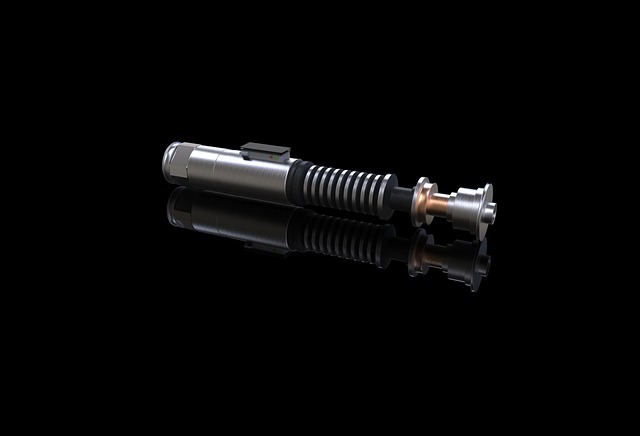
Part One: Films
Engineering in Pop Culture
Read a summary using the INOMICS AI tool
It is amazing how often engineering concepts (or engineered products) have been incorporated into popular culture. In this blog, we consider the impact of engineering on popular films and vice-versa.
When science or engineering is at the heart of a film, a lot of work has to be done to ensure that while some elements may be far-fetched, they are part of a plausible future reality. Most famously, Steven Spielberg had sought the advice and knowledge of various engineering and technology experts in 1999 to help shape the future-scape of his hit film Minority Report, released in 2002. The film was set in 2054, and is an example of collaboration between filmmakers and engineers that can lead to depictions of some of the most realistic products and gadgets we can find today.
How much have sci-fi devices inspired engineering innovations in real life? And when fictional devices from films cross over, back into real life, can they, or do they, live up to their on-screen counterparts?
Could a real-life lightsaber exist and be used in combat? The short answer is yes – ish
Star Wars introduced us to the lightsaber; a weapon of choice for the Jedi and Sith alike. In the films they are shown as glowing, retractable plasma blades of energy, powered by (fictional) kyber crystals which could cut through (or melt) almost everything from metal and wood to human and alien flesh. They were used by both the good and evil sides in hand-to-hand battles around the galaxy.
 Engineers who grew up watching Star Wars have always been fascinated with the possibility of a laser being controlled with enough energy to cut through any object. What material could be used? How could you control the length of the laser when, in effect a laser beam, like light, can go on forever. What energy source could be used to give a real lightsaber its weaponry qualities?
Engineers who grew up watching Star Wars have always been fascinated with the possibility of a laser being controlled with enough energy to cut through any object. What material could be used? How could you control the length of the laser when, in effect a laser beam, like light, can go on forever. What energy source could be used to give a real lightsaber its weaponry qualities?
James Hobson, a Canadian engineer and inventor, has been creating real-life versions of fictional devices for many years. He has formed Wolverine’s bone claws, created Spiderman’s wall climbers and reproduced the Predator’s thermal-vision helmet. In October 2020, he was awarded a Guinness World Record1 for the world’s first retractable, plasma-based proto-lightsaber. This took him and his team many iterations and several years to create and get to this stage. Whilst retractable and controllable, it is not yet the fully functioning lightsaber as wielded by Luke Skywalker in the films because it still needs to be attached to a power source of liquid propane gas and oxygen gas. When combined however, it creates heat in a plasma beam of 2,204 °C (4,000°F) – hot enough to cut through steel.
The beam itself can even be made to glow different colours (should the need arise to distinguish good from evil) by using different salts incorporated in the powerpack. He and other engineers are working on various iterations to try and recreate a version that (in the future) will require less power, be more accurate and have all the hallmarks of a lightsaber worthy of a Jedi Master.
Alongside the lightsaber, another major element of Star Wars were cyborgs – notably, the most famous (and evilest) of all cyborgs – Darth Vader. After being burnt by volcanic lava, Anakin Skywalker’s mutilated body was transformed into Darth Vader by having his form encapsulated into a life-supporting cyborg system. His organic stumps were implanted with neural links which relayed muscle impulses between his brain and limbs, allowing his legs, arms and hands to move under conscious control.
Of course, it’s not just in Star Wars where cyborgs existed. Star Trek had its own plethora of characters made by a fusion of flesh and steel – the most prominent ones were aptly named Borgs, led by Borg Queen. She was shown in many of the episodes and films as a human head, shoulders and spine, suspended in mid-air. But then she would emerge amalgamated with an artificial body connected to mechanical arms and legs, ready to walk and act almost human-like. Both these characters took on the full embodiment of a cyborg with both mechanical and biological body parts.
Could Darth Vader and the Borg Queen be real? The short answer is yes – nearly
The term cyborg (or cybernetic organism) is defined as a biological lifeform that has been augmented with technology, such as bionic implants or mechanical components, integrated into the original body to enhance existing functions or add new functionality. With this definition in mind, Darth Vader and the Borg Queen are certainly cyborgs. In our world, there are real-life examples of human bodies having supplementary parts which merge body, mind and mechanical parts.
With the advent of computers, different composite materials and predictive technologies, engineers have grappled with how to make limbs, for example, do what our brains want them to do – i.e. become fully functional and conscious controlled, augmenting human capabilities.
One of the most successful examples of part-human, part-machine is Professor Kevin Warwick, a British engineer based at Reading University. As a researcher in biomedical engineering, control systems and robotics, he self-experimented in 2002, when he had neuro-surgical implants which interfaced directly with his nervous system via his left wrist - linking his nervous system to a computer. As the computer could monitor the signals between his brain and arm, he was able to control a robotic arm via the internet, simply by impulses in his brain. He is considered by some as the first cyborg.
There clearly is a huge potential for more research and experiments to fully develop this discipline of engineering, but now that the lines between humans and technology are somewhat blurred, it is conceivable that in years to come that line will disappear altogether. For some, that is an exciting prospect, leading to innovations which will help humanity – for others nightmare scenarios of Terminator look-alikes come to mind.
Apart from cyborgs, another iconic element of Star Trek was the Communicator. When it was first aired on our television screens in 1964, Star Trek was set in the year 2254 and gave us the first glimpse of this fictional device. It was a hand-held gadget used for person-to-person or person-to-ship communications. It had a flip-top design with the top part containing the aerial and the bottom half, speakers and microphones crew members could speak into. By the fictional year 2364, these communication gadgets were incorporated into a small metal device (in the shape of the Starfleet’s insignia) which were attached across the left breast of the crew’s uniform – the Combadge. No longer needing to be opened, the user would simply tap it and speak.
Could the Communicator and Combadge be used today? The short answer is yes – most definitely.
It is widely recognised that Martin Cooper, an American electrical engineer, working at Motorola in the 1970s was watching Star Trek’s Captain Kirk using his communicator, when it inspired him to think more about person-to-person communication without the use of a land-line. He led the team of engineers to develop the world’s first truly handheld, commercial mobile phone – the DynaTAC 8000x – released in 1973. It was a bulky device, took 10 hours to charge and had very short battery life, but it was the beginning of the mobile phones we now rely on every day. By 1996 Motorola had released the StarTAC, the first flip phone which had a striking resemblance to the communicator. The emergence of smaller and smarter mobile phones have, in part, been based on the very real technological and engineering advances in antennas, processor chips, electromagnetic radio waves and base stations to name just a few elements.
If Star Trek’s Communicator has become a reality via our mobile phones – how about the Combadge? Unsurprisingly, this has also become available in recent years. The arrival of Bluetooth technology had spurred many companies and engineering entrepreneurs to work out how to incorporate the communication system into a small device and connect it to a smartphone. These products (ideally pinned to the left breast for maximum replication) can enable us to make and receive calls (through its built-in speakers and noise cancelling microphones) with a tap or two of the device – just like in the films. Use of voice-activated systems and AI have also allowed the manufacturers to bring close to life this once fictional device.
What the future holds
Of course, these are not the only films where fictional engineering have pre-dated (or even spurred on) real-life equivalents in some way. From 1985’s Back to the Future (video calling, flat-screen televisions and wearable tech) to 2002’s Minority Report (driverless cars, personalized ads and voice-automated homes) films have continuously shown us that they can predict future products with unnerving accuracy.
There are some items that are a few years away, but could they still become real? Camouflaging vehicles like James Bond did in Die Another Day (2002) are not ready just yet, but various military organisations are working on the idea. And flying cars from Back to the Future may not be here yet, but we do have flying drones which are being tested to carry people…so expect to see them in a not-too-distant future near you.
-
- Mid-Level Industry Job
- Posted 2 months ago
Configuration Manager - Accelerators and FCC Study (EN-ACE-CL-2025-207-LD)
At CERN in Genève, Switzerland -
- PhD Program, Program, Postgraduate Scholarship
- Posted 1 year ago
PhD Scholarships at Exeter Economics
Starts 2 Sep at University of Exeter in Exeter, United Kingdom -
- Master's Program
- Posted 7 months ago
Master in Statistics, Data Intelligence, and the Foundations of the Sciences
Starts 15 Sep at Università Politecnica delle Marche in Ancona, Italy











